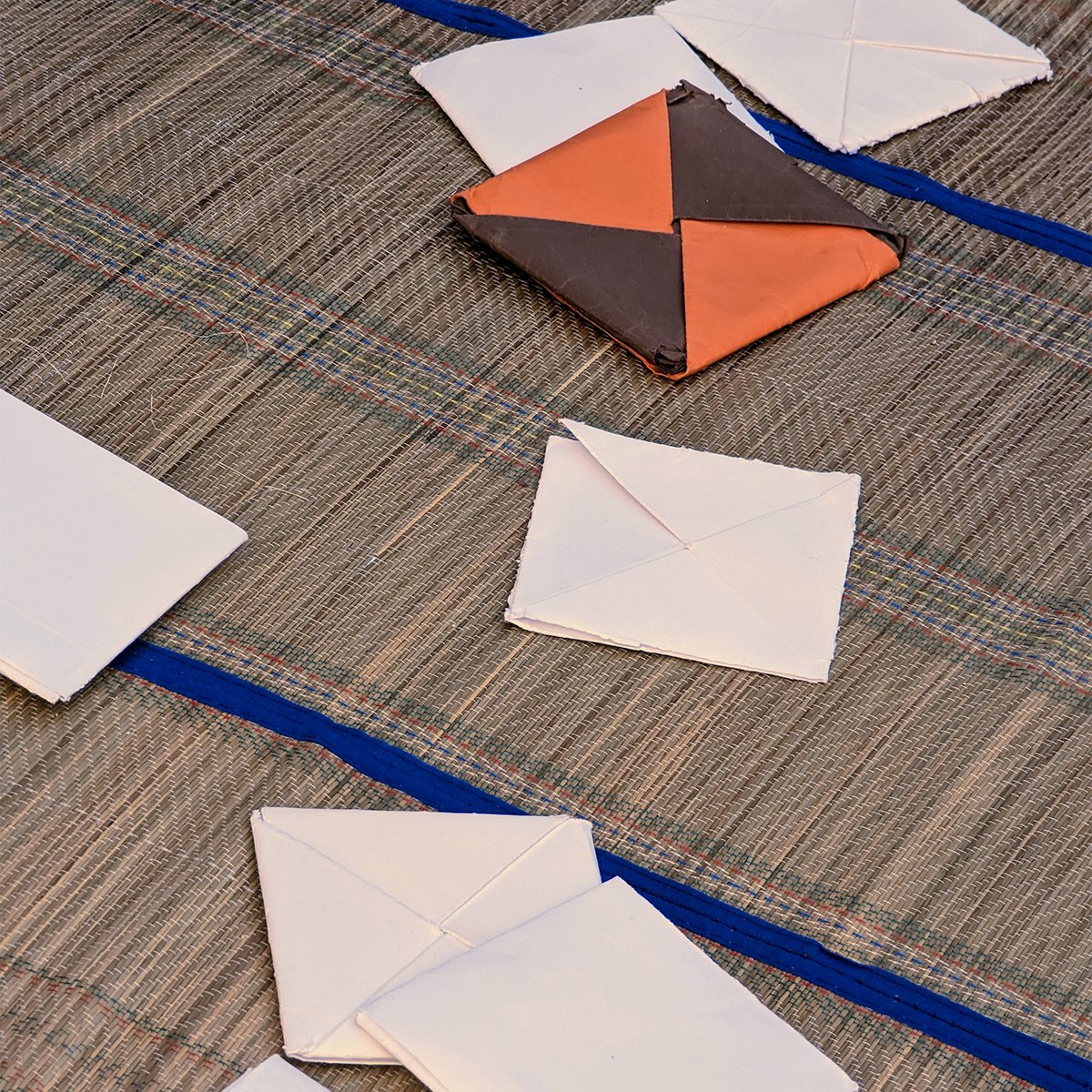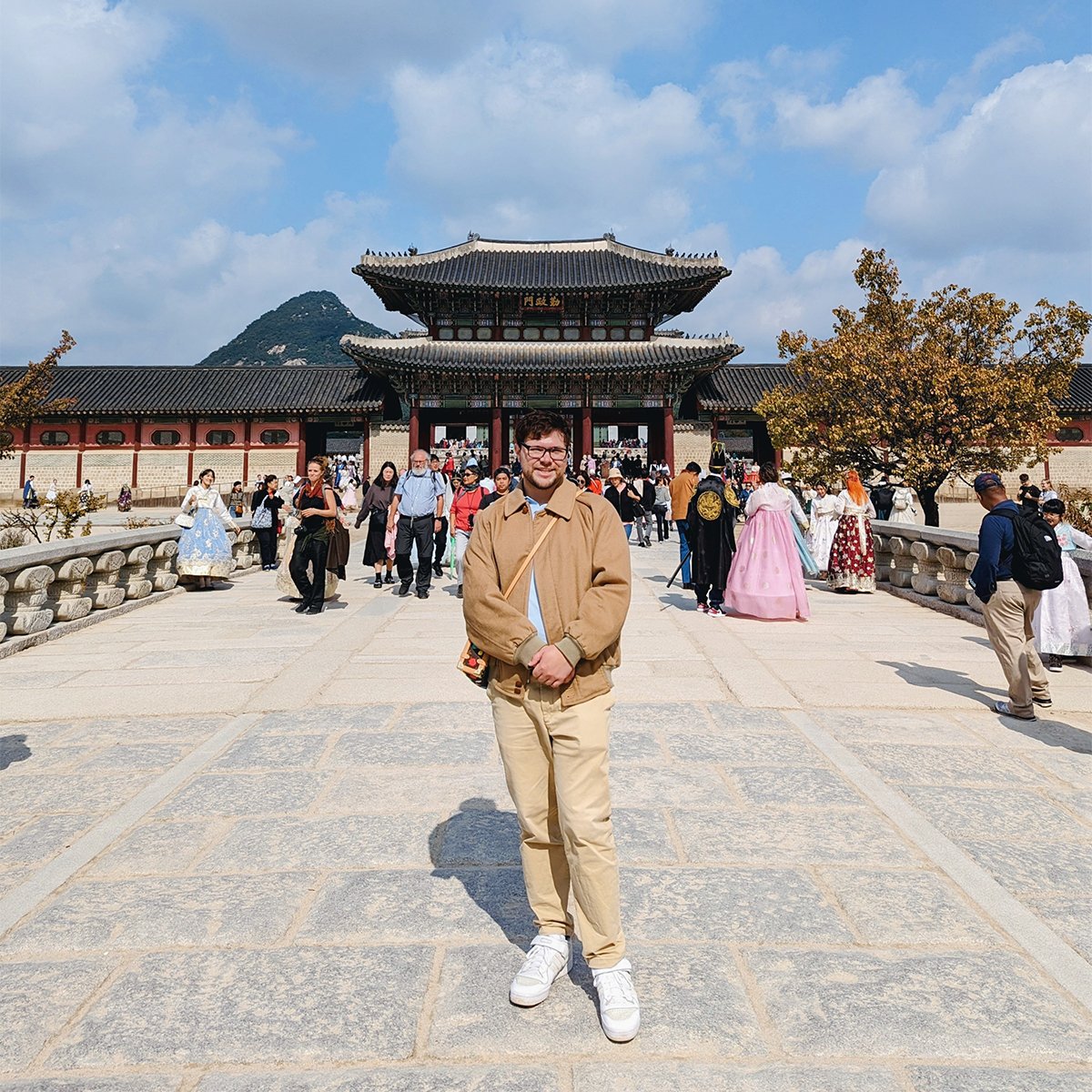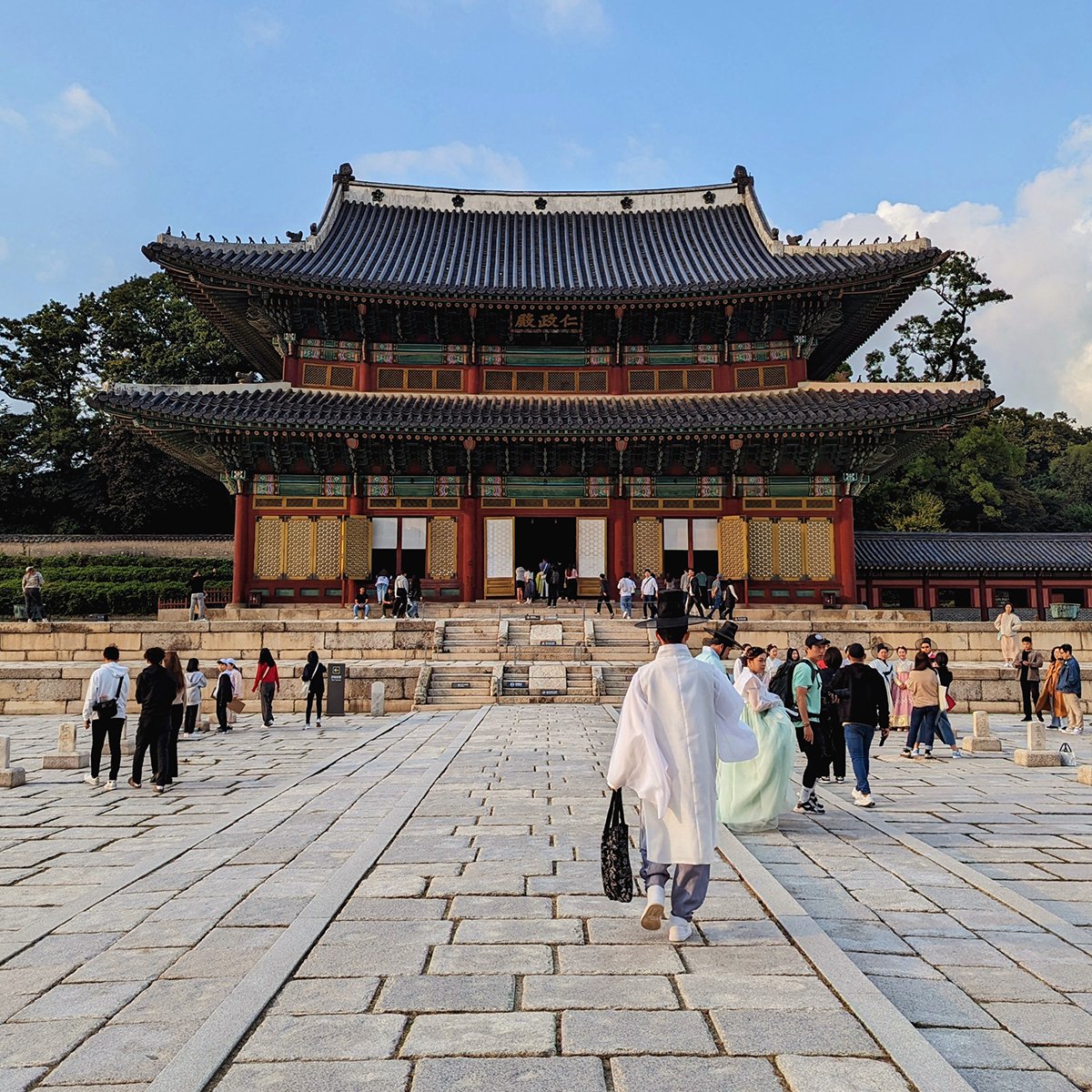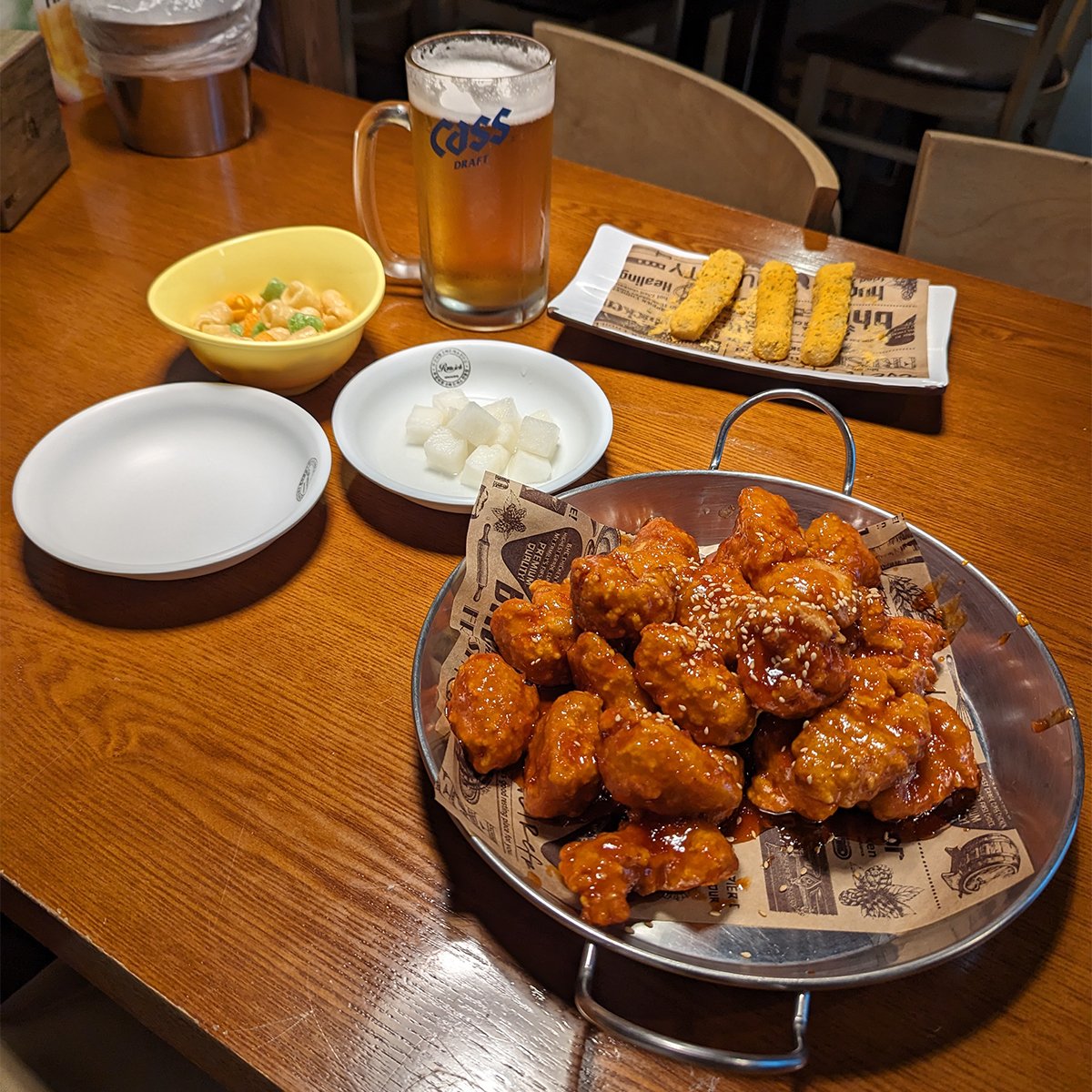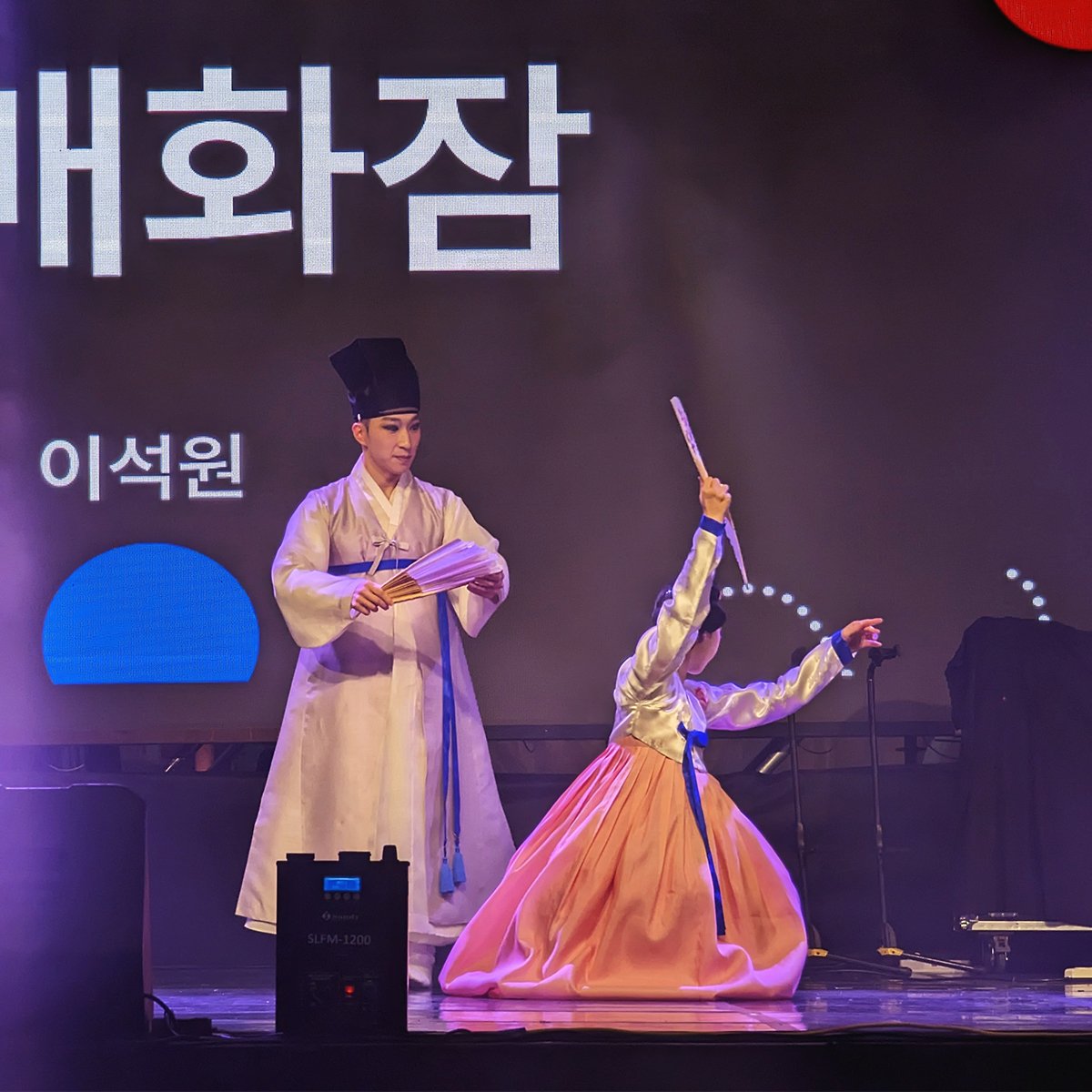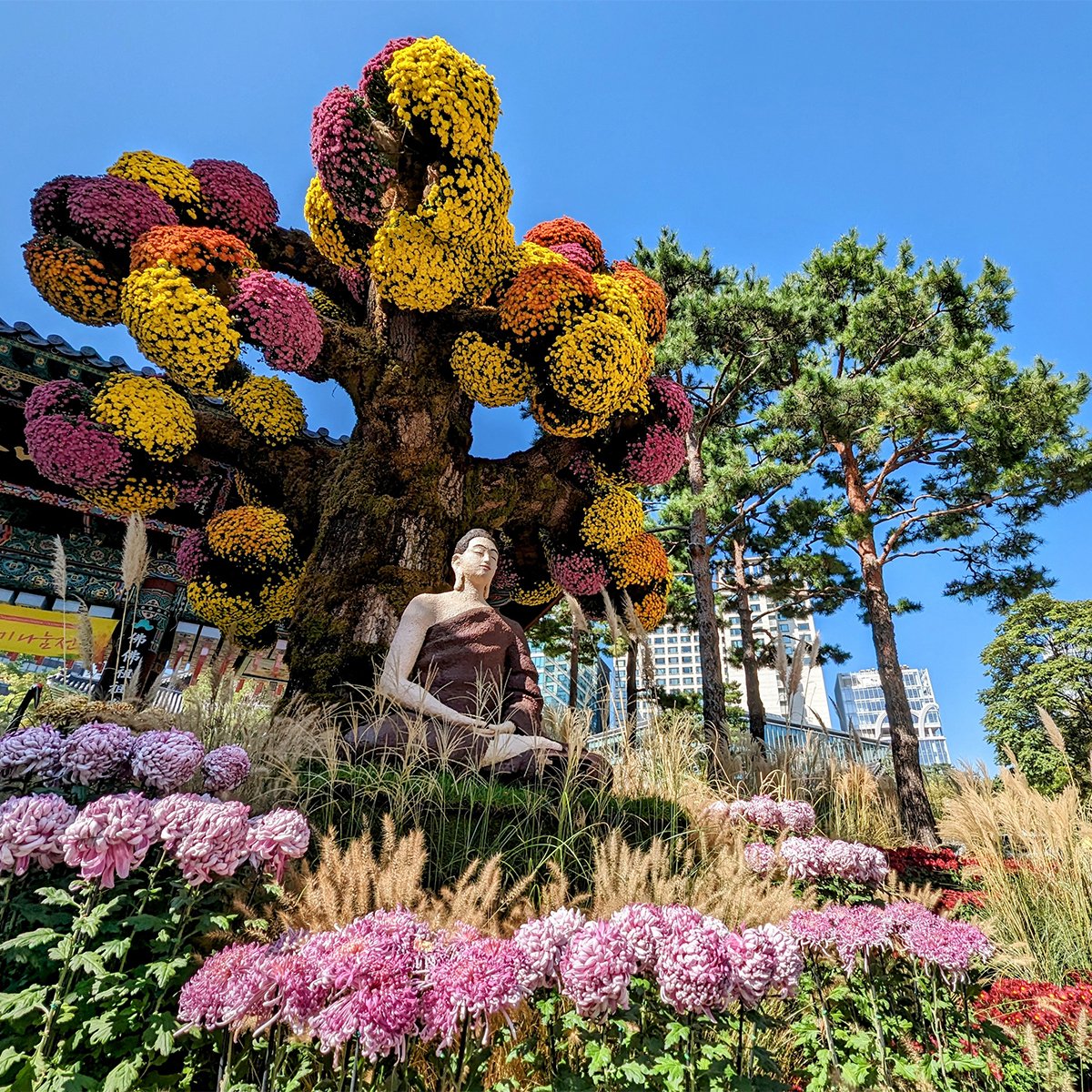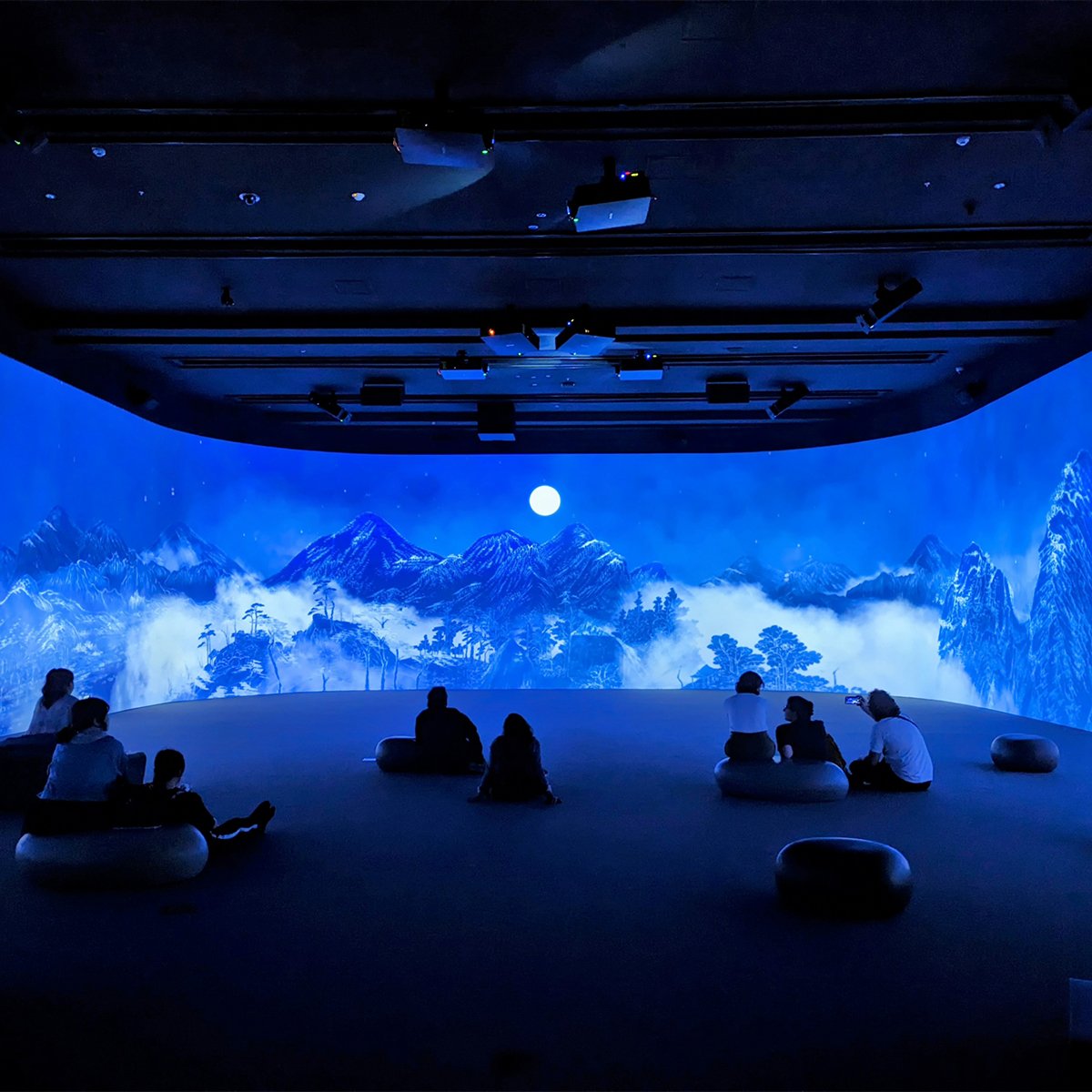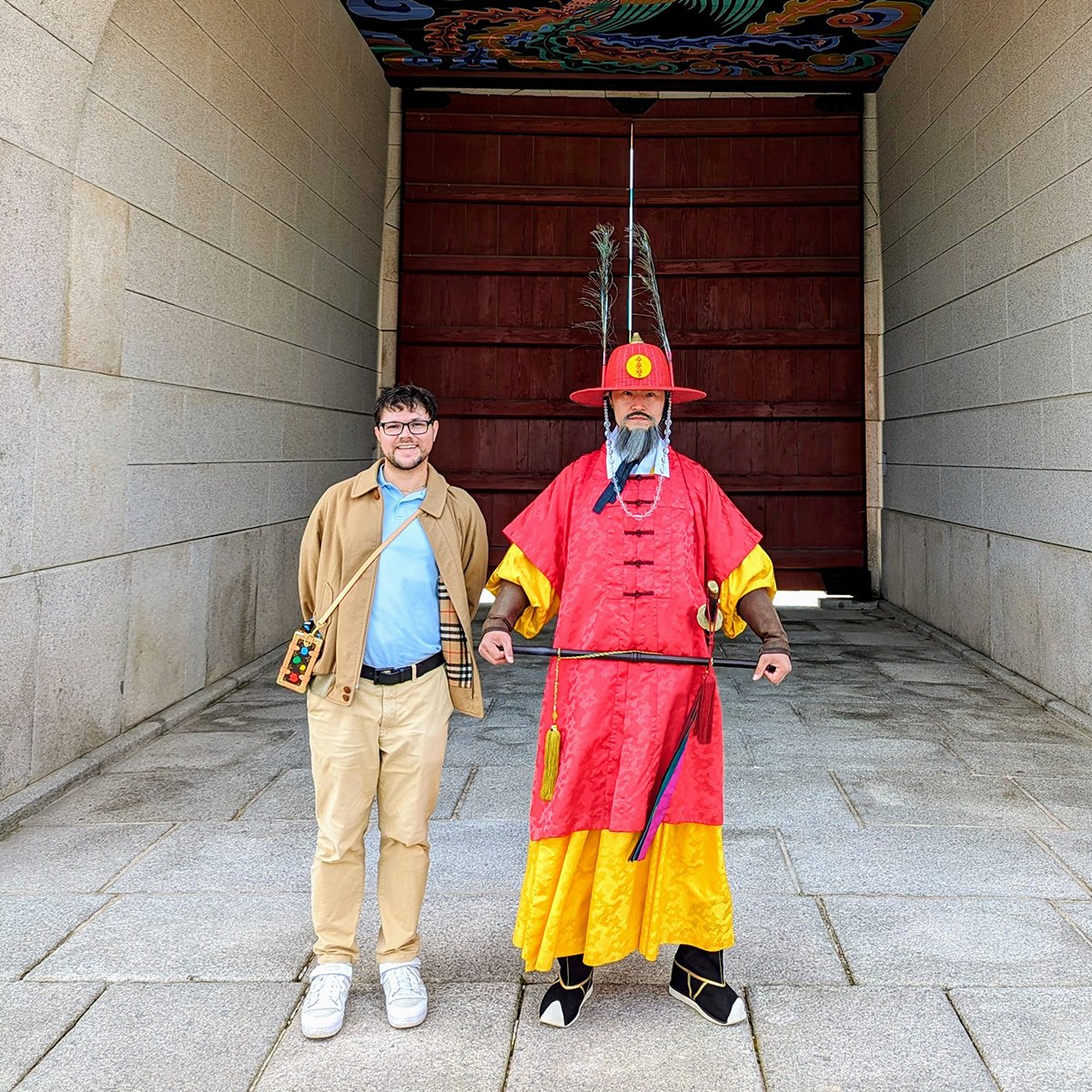Travel Guide: Seoul

Seoul is a vibrant entertainment capital with unmatched skincare, beautiful architecture, and delicious food.
Cover photo: Posing in Bukchon Hanok Village with Seoul Tower in the distance, Seoul, South Korea (2023).
Intro
I just returned from a trip to Seoul (서울). It was wonderful! The national capital is hilly, lush, and beautiful. I was happy to indulge in Korean food, music, and skincare. While October is early for autumn foliage, the month is rich with cultural activities, so I enjoyed many events such as concerts, dances, and even games. Please read on for more details, history, and travel tips.
Please click on an image above for more information.
Cultural Powerhouse
South Korea’s incredible rise to the global mainstream is unparalleled in the 21st century. The phenomenon of Hallyu (한류) — “the Korean wave” — has risen steadily since the 1990s. As of 2021, it was the world’s seventh-largest producer of entertainment, primarily in music and film.
The world was introduced to K-pop in 2012, with Psy’s viral hit Gangnam Style. The accompanying music video was the first to garner one billion views on YouTube. Bong Joon-ho’s Parasite (2019) was the first foreign-language film to win an Oscar for best picture and, in 2020, BTS became the world’s first best-selling artist performing in a non-English language. Hwang Dong-hyuk’s Squid Game set Netflix’s record for most-watched show the following year, reaching 111 million viewers.
Flanked by North Korea and seas on every side, South Korea is a virtual island, increasingly reliant on cultural exports and tourism for economic growth. BTS alone contributes an annual 5.56 trillion won (5 billion USD). In effort to capitalize on the momentum of Hallyu, the national government has declared 2023-2024 the “Visit Korea Year” with a goal of 30 million annual foreign tourists by 2027.
History
Settled upon the Han River, Seoul served as the political and cultural capital of unified Korea since 1394. By the end of World War II — following Japanese colonization — Korea was arbitrarily split between the Soviet Union (now Russia) and the United States. Both North and South Korea were formally established in 1948 and tensions erupted into the Korean War two years later.
Though an armistice was reached in ‘53, the “Forgotten War” is officially ongoing. Combat readiness is an accepted fact of daily life. I saw several uniformed men during my visit; all South Korean males are conscripted to serve in the military for about two years. On the subway, television screens gave brief updates about relations with North Korea.
Daily Life
South Korea (대한민국) has a population of 52 million people, 10 million of which live in Seoul. A majority (57%) of the nation identifies as nonreligious, approximately 28% is Christian, and just 15% is Buddhist.
The national language is Korean, though some 80% of South Koreans — generally younger generations — are fluent in English, making for a convenient trip. I learned only two words: annyeonghaseyo (hello) and kamsahamnida (thank you).
The nation is home to a large technology and automobile industry, notably Samsung, LG, Hyundai, and Kia. It’s also a leader in cosmetics, including skincare, makeup, and plastic surgery. The currency is the South Korean Won (KRW). Tips are not required and generally not accepted.
Cuisine
The traditional Korean diet consists of rice, seafood, and kimchi (fermented vegetables), though KBBQ (grilled meats) and yangnyeom-chikin (Korean fried chicken) are also popular. KFC is extra delicious because it’s double-fried! I recommend the chain BHC Chicken.
My favorite dish is bibimbap, a mixed bowl with rice, meat, and vegetables. For a true culinary experience, visit Seoul’s oldest market, Gwangjang. There is also the tourist area of Myeong-Dong, known for shopping and street food, where I tasted dalgona (honeycomb toffee)! HBAF’s flavored almonds are a popular souvenir.
Yuja (yuzu), hallabong (Jeju tangerine), and gugija (goji berry) are some unique fruits in the region. The most popular alcohol is soju, which is similar to vodka but half proof. Korean food tends to be spicy, seasoned with generous amounts of chili. For alternatives, try Japanese or Western restaurants.
South Korea has also developed a vibrant cafe culture, with some truly unique spaces and menu items. Seoul is said to have the most cafes per capita! Cafe hopping is a popular hobby. Visit at opening hours to avoid long waits. I enjoyed Art x Shift; other popular cafes include Cafe Onion Anguk, Cafe Pokpo, and Starbucks Gyongdong 1960 Branch.
Architecture
Seoul is both an Asian city with a rich heritage and a cosmopolitan metropolis, offering skyscrapers, historic palaces, shopping malls and beautiful hanok (Joseon-era houses).
Don’t miss the changing of the guards at Gyeongbokgung, or the Palace Greatly Blessed by Heaven. A walk through the nearby Bukchon Hanok Village is also a must. Zaha Hadid’s futurist Dongdaemun Design Plaza (DDP) — a sleek cultural center with shops and galleries — is located in trendy Euljiro.
Built in 1969, landmark Seoul Tower sits on the peak of Mount Namsan, offering incredible views of the city. The tower base is free to enjoy, with plenty of shops and eateries. Please note, taxis are not allowed up to the tower. Options include a scenic walk, short bus ride, and a cable car.
Art / Fashion / Shopping
In Seoul, art, fashion, and shopping are inseparable. Media art is everywhere, displayed in museums, malls, and metro stations. For shopping, visit the stationery store Artbox, premium sunglasses brand Gentle Monster, and Aland, which features Korean designers. Check out Kakao Friends for cute character merchandise as well.
In addition to Myeong-Dong, Insadong Street is a great spot to find souvenirs, or travel south of the Han River to soak up Gangnam style, in Korea’s luxury district, where you’ll find K-Star Road and the Starfield Coex Mall. I was surprised to learn that both National Geographic and Pan Am have been reimagined as Korean apparel brands.
For a crash course in Korean art, visit the National Museum of Korea. The massive, 12,000 piece collection traces Korean history from ancient to modern times. Budget at least two hours for the sprawling institution.
Entertainment
Of course, I was hoping to see a K-pop act but I wasn’t able to find tickets. I did, however, enjoy other concerts such as gugak (traditional music). The Seoul Gugak Music Festival is a free annual event; I especially enjoyed UheeSka (유희스카), a Jamaican-inspired band.
The low-cost annual showcase Journey to Korean Music happened to take place near my hotel. Presented for international booking agents, it was an exciting and intimate show. Both The Tune (더튠) and Hilgeum (힐금) were marvelous.
The K-Royal Culture Festival takes place twice a year — autumn and spring — with various performances, games, and special tours offered at the city’s palaces. I was happy to try ddakji, a traditional paper-flipping game, at Changgyeonggung (Palace). I also stumbled upon the Chrysanthemum Festival at Jogyesa Temple, featuring creative flower displays, red bean cakes, and live music.
You can look for additional events through the Seoul Metropolitan Government, the Korea Cultural Heritage Foundation, the National Theater, and ticketing site Interpark. There are also many dedicated K-pop venues currently under construction, which are set to open in the next few years.
Transportation & Accommodation
Google Maps is useless in Korea, unable to provide even basic walking directions. Locals use Naver or Kakao apps. For data, I purchased a SIM card at the airport, costing about 5 USD per day. Seoul is served by Incheon Airport; it takes approximately one hour to reach the city by metro.
The metro system is cheap and efficient. I was especially impressed with Seoul’s bus stops; most feature digital signage with updated arrival times and many are equipped with heated seats. Note: traffic moves on the right. The subway is also fast and clean, though stations are deep underground, traversing multiple levels of stairs and escalators.
Taxis are also surprisingly affordable, but I had some difficulty with hailing. Drivers tend to not speak English, so please prepare a Korean address.
Most major hotels are located in central Myeong-Dong. I stayed further east in Chungmuro, which was both cheaper and quieter. For nightlife, consider staying in Itaewon. Dancing is a late night game, with most clubs empty before 1:00, staying open until 5:00 or later.
Power outlets use C and F plugs, but my hotel didn’t require the use of an adapter. If interested, please check to have your room cleaned daily, as it appears to be an unpopular practice in Korea.
LGBT+
Despite its progressive appearance, South Korea is among the most homophobic countries in Asia, thanks to a vocal conservative Christian minority. For queer acceptance, it ranks 75th out of 175 nations around the world, after Japan and Vietnam. Same-sex marriage is not recognized. There are few legal protections, with discrimination and bullying rampant. As a result, the queer community is understandably guarded. Nationwide, the most popular gay app is Jack’d but foreigners seem to receive little attention.
Top Attractions
Gyeongbokgung (Palace) and Royal Guards
Bukchon Hanok Village (traditional houses)
Gwangjang Market
National Museum of Korea (art & history)
Seoul Tower
Myeong-Dong Walking Street (street-food and shopping)
Dongdaemun Design Plaza (cultural center)
Jogyesa Temple (Buddhist center)
Changdeogung and Changgyeonggung (Palaces)
K-Star Road (pop group statues)
Starfield Coex Mall
Itaewon Clubs
Additional Ideas
If you’re looking for more ways to enjoy Korea, consider renting hanbok (traditional clothing), soaking at jimjilbang (bathhouses), or getting skin treatments.
Other popular locations in Korea include the DMZ (DeMilitarized Zone) by North Korea, the subtropical island of Jeju, and Busan, the nation’s second-largest city.
Safety Update
It’s come to my attention there has been a growing number of “random” knife attacks in Seoul. While it remains a safe city, please exercise caution.




